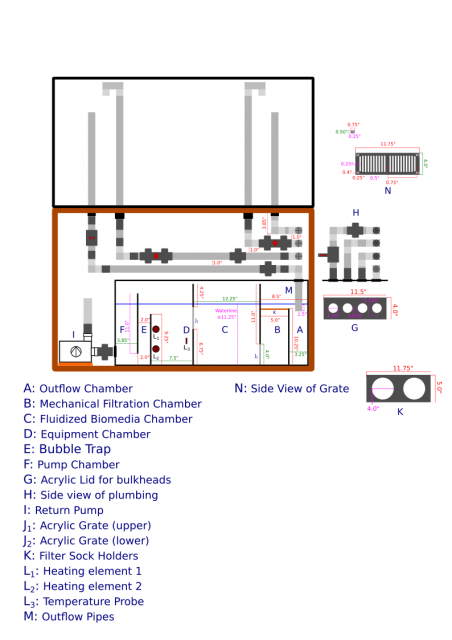With that last chamber "f" being so small and where the baffle is, you run the risk of running your pump dry. Just remove that baffle. You can put your skimmer in c if you ever go saltwater. You can use lots of live rock in the dt for your bio and a biopellet reactor outside the sump for nitrate control a little more lr in the last chamber for extra bio. You'd want a airbubble trap between your skimmer and the return pump anyway.
The reason for F being so small is because I don't want it to be possible for the display tank to flood if the drains clog, which I understand to be much more of a risk when using full siphon drains versus open channel drains. Were I to remove that baffle around 5 gallons of water would end up on the floor in that eventuality, and considering my pump has an automatic shutoff feature, the motor shouldn't burn out if it runs dry, though I'll obviously keep a spare around for that scenario.
I can probably afford to give the final chamber more space though.



